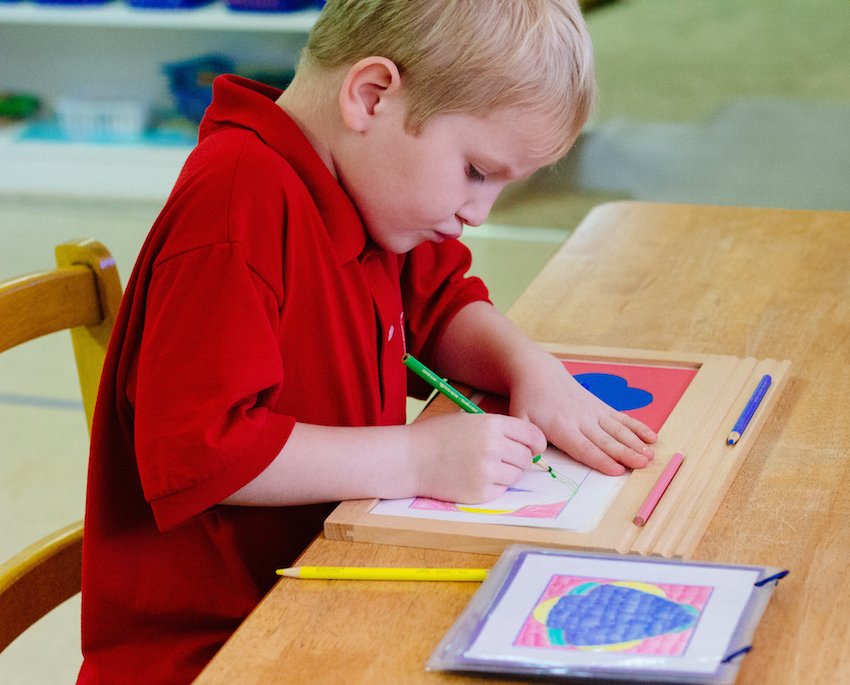“At about a year and a half, the child discovers another fact and that is that each thing has its own name.” ~Maria Montessori
In the Language area, teachers introduce children to a “language rich” environment through song, poetry, literature and read aloud, story discussion, nomenclature and cultural vocabulary, and auditory games.

Using the Sand Paper Letters, a tactile alphabet, the child learns each letter phonetically, so that he or she can easily and successfully combine sounds to form words. The elements of reading and writing develop naturally and simultaneously through the use of this and other tactile equipment, such as the Movable Alphabet. Grammar is introduced when reading levels have advanced. The use of concrete materials aids the child in transitioning to abstract language naturally.

Control of the hand, in preparation for writing, is developed through many exercises, including specially designed tasks in the use of the pencil. Yet, even before children are comfortable in their handwriting skills, they spell words, compose sentences and stories, and work on punctuation and capitalization with the Movable Alphabet.
Language Sequence
- Auditory: Comprehension, Rhyming, Opposites
- Visual: Picture, Letter, and Word Match
- Writing Development
- Beginning Sounds, Ending Sounds, Vowels
- Blending and Word Building: Short Vowel 3-Letter Words
- Sight Words and Simple Sentence Structure
- Consonant Blends: Short Vowel Words
- Long Vowel Words: Silent “e” and Digraphs
- Phonograms and Other
- Grammar, Word Study, Alphabetical Order
- Story Comprehension and Composition